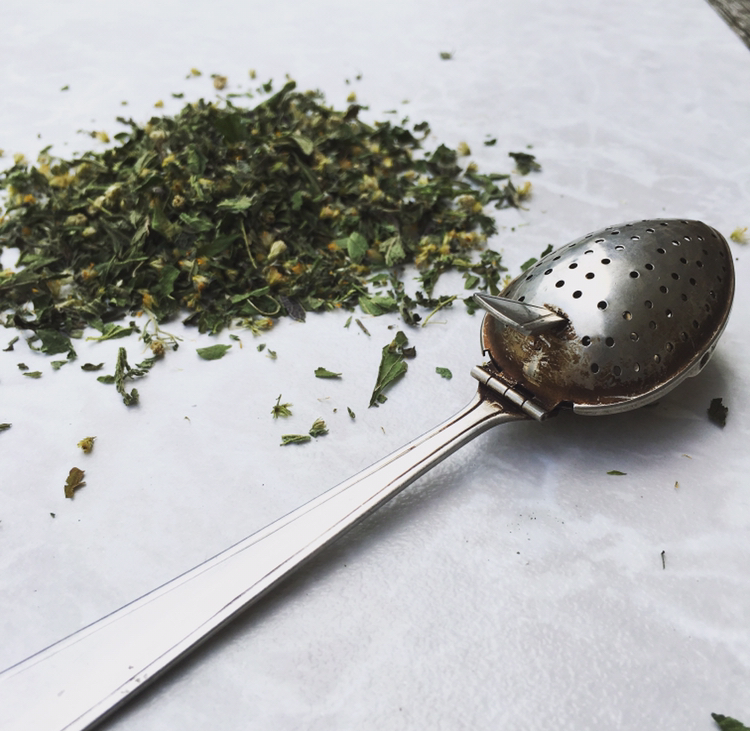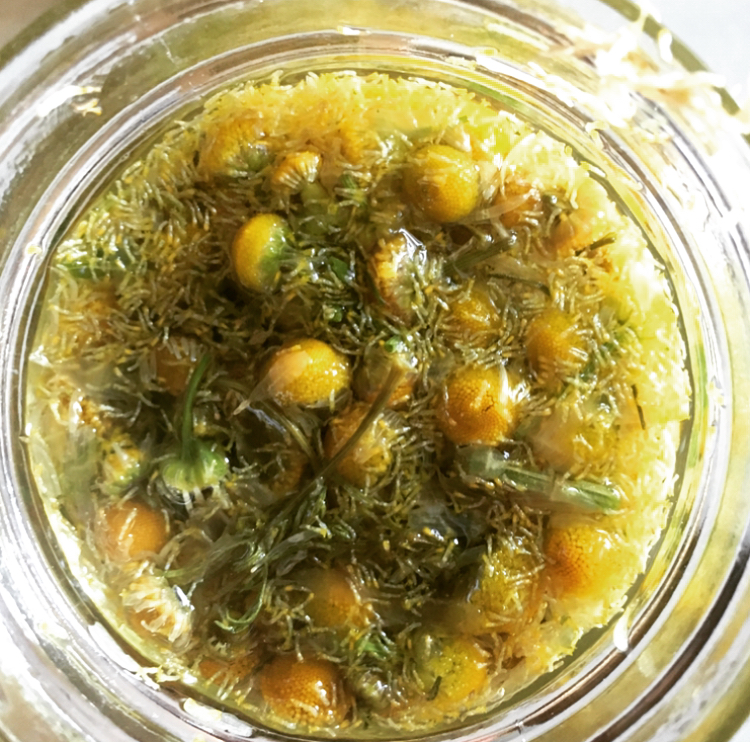How to Make an Herbal Infusion
This infusing spoon, once my grandmother's, is my most treasured family heirloom.
I love drinking herbal infusions. They are a beautiful, flavorful, and effective way of conveying herbal goodness to your being. Infusions are a great way to use loose herbs and can be a wonderful daily ritual. But sometimes I feel concerned that people aren't getting the most out of the beautiful herbs that they're taking the time to infuse into water. So here's how to make sure you're getting the full benefit of those beautiful infusions you're making.
First of all, what's the difference between a tea and an infusion?
Technically, the only substance considered "tea" is leaves from the Camellia sinensis plant that have been infused into water -- black tea, green tea, white tea, oolong tea, and puerrh all consist of leaves from the Camellia shrub that have been processed differently (some are harvested at different times or fermented or roasted in different ways.) When you infuse any other plant into water, it's considered a tisane or an herbal infusion. Sometimes I get lax and use the word "tea" or "herbal tea" because it's more understandable to people, but mostly I prefer the word "herbal infusion. It seems to emphasize the medicinal qualities.
So how do you make an herbal infusion?
The biggest mistake that most people make is the amount of time that they steep the herbs.
1. Choose your Vessel and Infusing Method.
I like to infuse herbs into a glass jar and then strain them into a cup. You can also use an infusing spoon, a tea ball, French Press, or another fancy gadget. Stick to metal, glass, wood, unbleached paper, cloth, and bamboo.
2. Add the Herbs.
I add about an inch of loose herbs per jar. Very scientific, I know. I don't like measuring anything if I don't have to (this is why I don't bake.)
3. Pour in just-boiled water.
4. Enjoy the beauty, breathe in the aroma, give reiki to your infusion, just find a way to take a moment.
5. Infuse for 10-15 minutes.
This is the the part that most of us rush. In order to get the full medicinal value of the herbs, you need to let them steep for at least 15 minutes, preferably covered. If you are truly using the herbs for their healing properties, you'll want the infusion to sit 8-12 hours. I make infusions at night and strain them in the morning. You can always reheat them on low heat later (not letting them come to a boil).
Exceptions to this: Herbs that are very high in volatile oils (lavender, rosemary, etc.) will get bitter if you let them steep for too long. While this is very healthy for you, it may not be what you're going for. If it's flavor you want with these herbs, 5-10 minutes is enough, and I don't recommend covering them.
6. Strain the herbs.
I love this stainless steel strainer with a funnel. I keep two of them in my kitchen at home. If you use herbs often, they make life much easier. Ideally, the strainer prevents you from spilling the infusion everywhere.
7. Enjoy your infusion!
For more details on how to make an infusion, such as:
Tips for specific herbs
Why infusions are so good for you and how to take them
How to infuse roots and barks (aka How to make a decoction)
How to use infusions for external healing
Come to our Intro to Herbal Remedies: Teas & Infusions Class on Tuesday, February 6th from 6:00-8:30.
You'll make your very own blend to take home and infuse!





